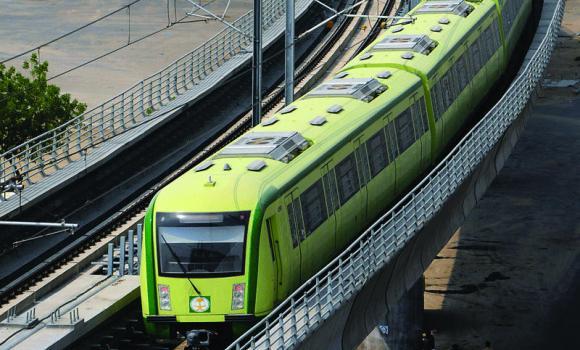
Al-Mashaer Train has all but eliminated congestion
Prior to the introduction of Al-Mashaer Train, millions of pilgrims used to be in their buses and other means of transport for hours on end moving form one place to another as part of their Haj rituals.
The announcement of plans to build a series of tunnels, bridges and the holy city’s first metro line, was greeted by residents and pilgrims with joy and they began looking forward to the day they could visit Makkah and the holy sites of Arafat, Muzdalifah and Mina with ease.
Al-Riyadh daily reports on how the metro line has changed the way pilgrims maneuver around the holy sites. There is no doubt that the Al-Mashaer metro project has significantly shortened the distance and time required to move around the holy sites. Once common traffic congestion is a rarity in the area because the 30,000 buses that used to transport pilgrims are no longer needed. As a result, pilgrims say they can perform rituals in ease as the pollution, noise and congestion caused by buses is nearly nonexistent.
E-gates
The implementation phase of the project began in 2009 with 5,000 construction workers working round-the-clock. It took them 16 months to complete the implementation and allow authorities to launch train services in 2011. Each ritual site has three stations with seven-lane services as well as electronic gates.
Only pilgrims carrying train tickets are given access to the gate. A ticket costs SR250 for all trips and SR50 for Tashreeq Days trips. The train passes through three different stations in Arafat Site, then to another three stations in Muzdalifah, and stops at three stations in Mina with the third at Al-Jamarat Bridge.
500,000 people every 6 hours
Each train has 12 air-conditioned cars and a total number of 60 doors so that pilgrims can get on and off the train swiftly. Each car is 25 meters long and the train can transport over 83,000 pilgrims in an hour or nearly 500,000 people every six hours at a speed of up to 120 km/h. Trips around the ritual sites typically take a few minutes; pilgrims are transported from Arafat to Mina in 13 minutes, Arafat to Muzdalifah in seven minutes and Muzdalifah to Mina in nine minutes.
There are no on-train staff to run and operate the train. It is auto-run and overseen by the control and operation center. The Civil Defense, which is in charge of responding to emergency situations during the Haj season, has allocated nine units to deal with any train accidents or emergency situation inside the train or its stations.
Test runs
Each year, the Ministry of Municipal and Rural Affairs runs test shuttle trips in Arafat, Muzdalifah and Mina to ensure that the train is ready for the new Haj season. A large number of young Saudi men and women are trained every year on ways to operate the train and the ministry has signed a contract for this purpose with a Malaysian company. The ministry is also considering signing a contract with a German company to train Saudi engineers on operating systems, signs, safety and other systems.



























